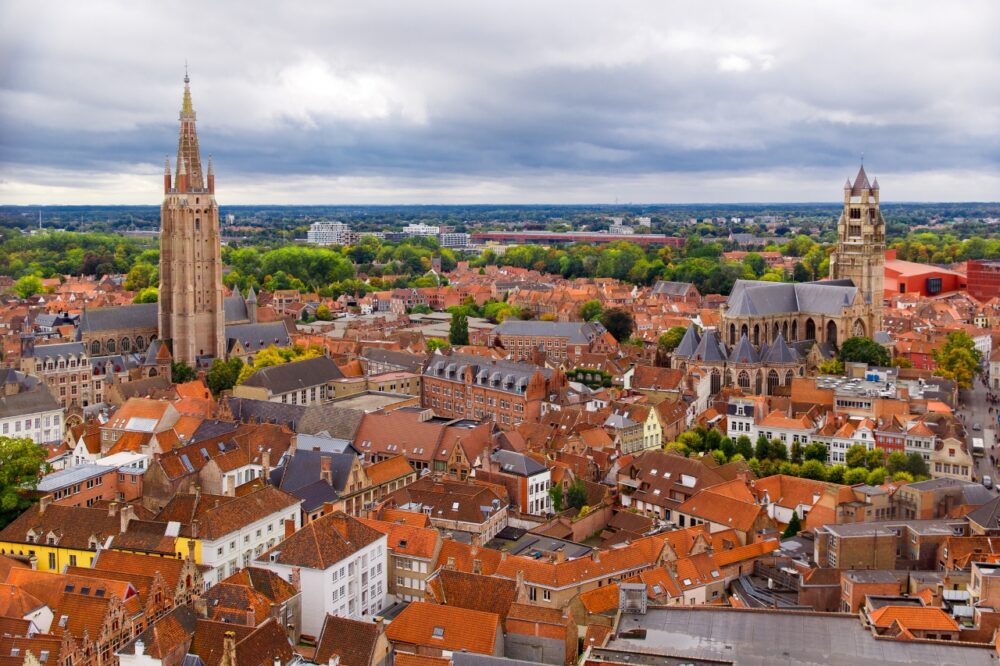
Is Bruges worth visiting? Without a doubt! The first time I wandered through Bruges, it felt like stepping into a real-life fairy tale. The cobbled streets, medieval buildings, and picturesque canals create a setting so charming it’s almost hard to believe it’s real. Add in the aroma of freshly made waffles wafting through the air, and Bruges becomes a place you’ll never want to leave.
Nestled in the heart of Belgium, Bruges is often called the “Venice of the North” thanks to its idyllic waterways and romantic atmosphere. This UNESCO World Heritage Site is a treasure trove of history and culture, from the iconic Belfry of Bruges to the stunning Basilica of the Holy Blood. Whether you’re sipping a Belgian beer at a cosy café or taking a boat ride under its many arched bridges, Bruges offers a magical escape for travellers of all kinds. But is Bruges worth visiting for you?
In this blog post, we’ll dive into the top 10 reasons why Bruges should be on your travel list, highlighting its unique attractions and irresistible charm. We’ll also share some insider travel tips to help you make the most of your visit. Keep reading, and you’ll see why Bruges deserves a top spot on your European itinerary.
Table of Contents
Pros – Reasons You Should Visit Bruges
1. A Fairytale City with Stunning Medieval Architecture
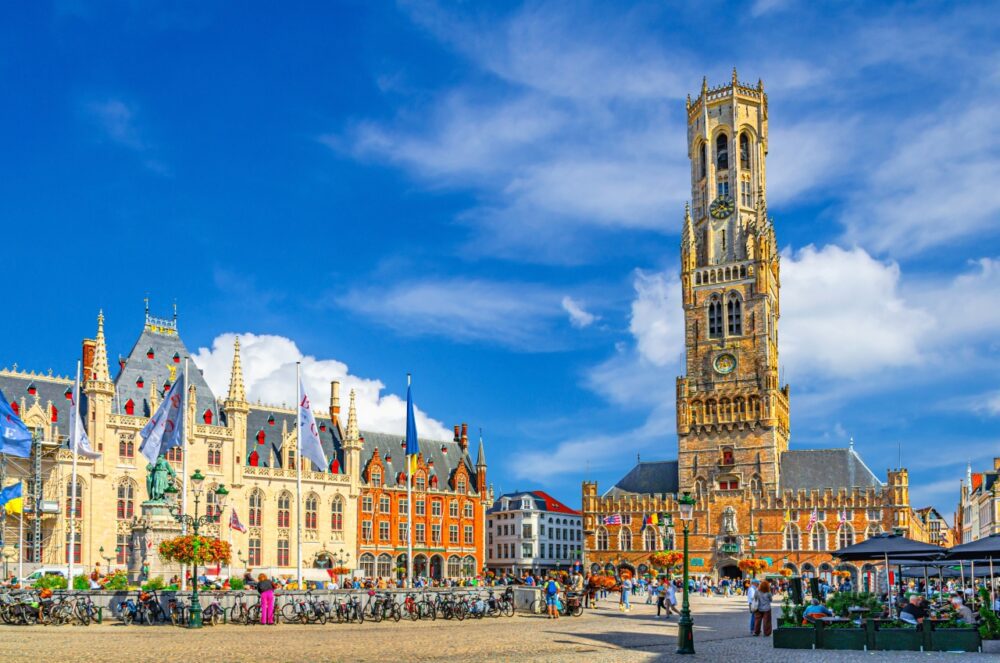
Bruges is one of the most picturesque cities in Europe, often described as a real-life fairytale. Its medieval charm has been preserved for centuries, with winding cobbled streets, soaring church spires, and quaint market squares creating a postcard-perfect setting. The city’s historic centre is a UNESCO World Heritage Site, and it’s easy to see why. Almost every building looks as though it belongs in a history book, from the grand guild houses that line Markt Square to the centuries-old bridges arching over quiet canals. Unlike some historic cities that feel overly reconstructed, Bruges has managed to retain an authentic, lived-in atmosphere that makes wandering its streets an experience in itself.
One of the city’s most iconic landmarks is the Belfry of Bruges, a towering 13th-century bell tower that dominates the skyline. Climbing the 366 steps to the top is no small feat—the narrow, spiral staircase seems to go on forever—but the reward is worth it. From the summit, the entire city unfolds beneath you, with its sea of red rooftops, church towers, and canals stretching into the distance. Another must-visit is Burg Square, home to the Basilica of the Holy Blood, a striking Gothic chapel that holds a relic believed to contain the blood of Christ. Whether you’re marvelling at its intricate stained glass windows or simply soaking up the hushed, reverent atmosphere, it’s one of those places that leaves a lasting impression.
2. Beautiful Canals and Bridges Around Every Corner
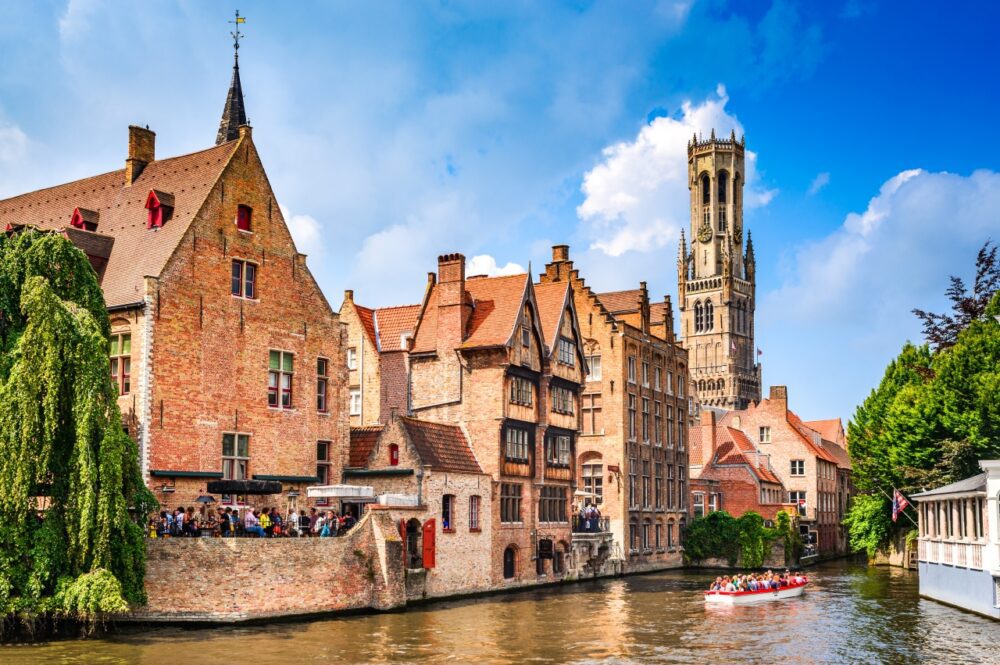
Bruges is often called the “Venice of the North,” and while it may not have the same scale as its Italian counterpart, it more than makes up for it in charm. The city’s canals snake through the historic centre, passing under stone bridges and alongside beautiful medieval buildings. These waterways give Bruges its romantic character, making even the most ordinary stroll feel like something special. With swans gliding peacefully along the water and flower-adorned bridges at every turn, it’s the kind of place where you find yourself stopping constantly just to take it all in.
A canal boat tour is one of the best ways to experience this side of Bruges. The boats are small and intimate, gliding through the waterways while local guides share stories about the city’s past. Floating under centuries-old bridges, past hidden courtyards and ivy-covered facades, I got a whole new perspective on Bruges’ beauty. One of my favourite spots was the Bonifacius Bridge, a tiny, secluded crossing where the reflections of Gothic buildings shimmered on the water like something out of a painting. Even if you choose to stay on foot, walking along the canals—especially at sunrise or sunset—offers some of the most peaceful and scenic moments in the city.
3. Home to Some of the Best Chocolate in the World
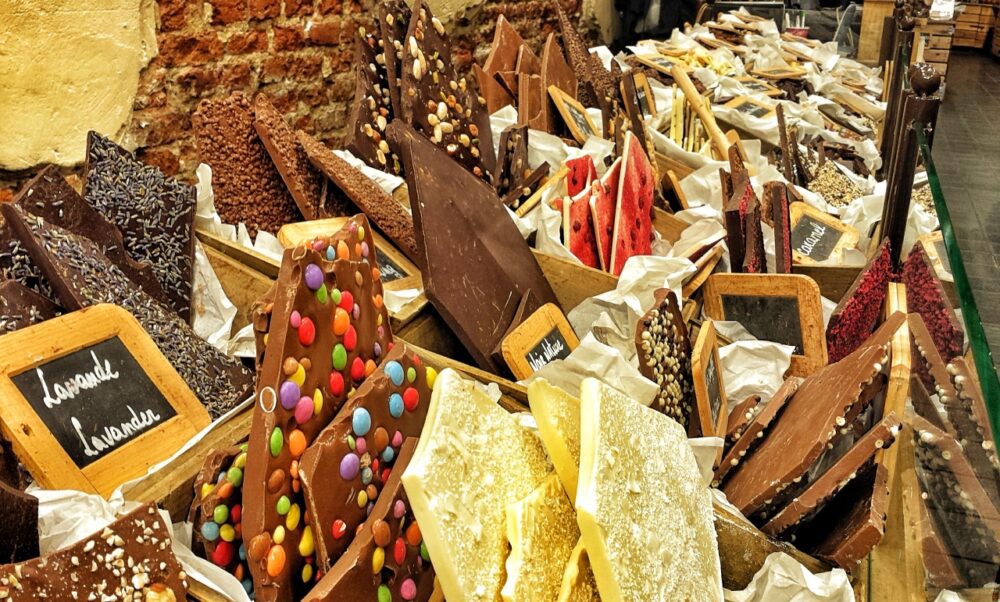
Belgium and chocolate go hand in hand, and Bruges is one of the best places in the country to indulge in this national treasure. The city is home to over 50 artisan chocolatiers, each crafting their own unique variations of pralines, ganaches, and truffles. Unlike mass-produced chocolate, these handmade creations use the highest quality cocoa beans and traditional techniques that have been perfected over generations. Whether you prefer rich, dark chocolate or creamy, melt-in-your-mouth milk varieties, Bruges has something to satisfy every sweet tooth.
I made it my mission to visit as many chocolate shops as possible, and each one had its own special charm. At The Chocolate Line, I discovered inventive flavours like chilli, saffron, and even wasabi-infused chocolate—an unexpectedly delicious surprise. Over at Dumon, a family-run chocolatier with a cosy, wooden-beamed interior, I sampled some of the smoothest pralines I’ve ever tasted. Many chocolatiers also offer workshops, where visitors can try their hand at making their own confections. I took a class at Choco-Story, Bruges’ chocolate museum, where I learned about the history of cocoa before rolling and dipping my own creations. The best part? Getting to take home a box of freshly made truffles, though I have to admit, they didn’t last long.
4. Incredible Belgian Beer and Cosy Pubs
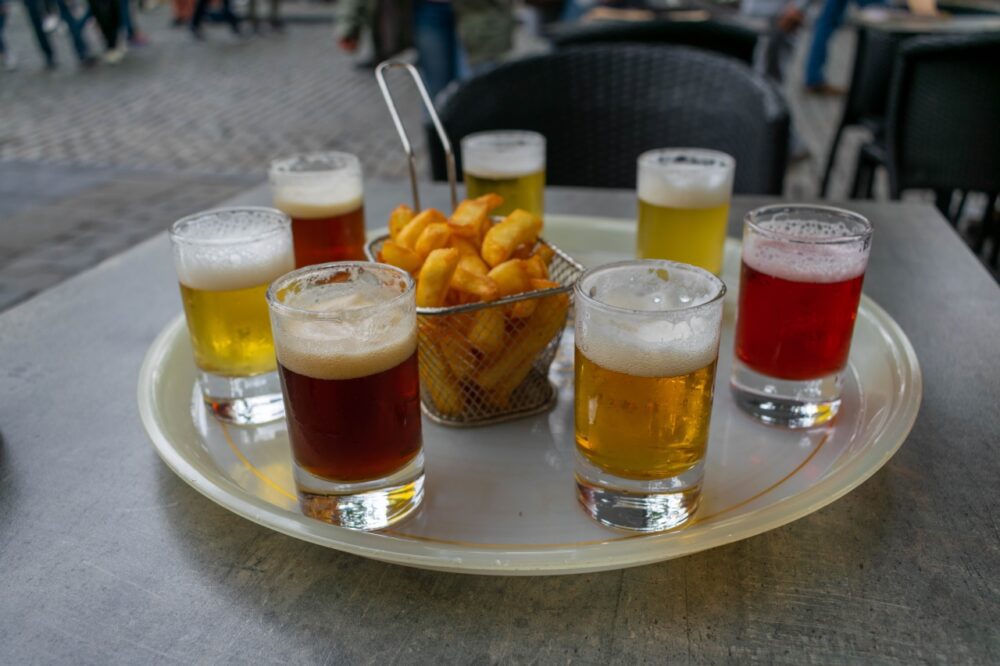
Belgium is world-famous for its beer, and Bruges is one of the best places to experience this brewing tradition. From strong Trappist ales brewed in monasteries to refreshing wheat beers and fruity lambics, the variety is incredible. Each beer is traditionally served in its own specially designed glass, enhancing its aroma and flavour. Bruges is home to some fantastic breweries, historic beer halls, and hidden pubs where you can sample local favourites while soaking up the city’s cosy atmosphere.
One of the highlights of my trip was visiting De Halve Maan Brewery, Bruges’ oldest working brewery. The guided tour took me through the brewing process, from malted barley to fermentation, and even included a visit to an underground pipeline that transports beer directly from the brewery to a bottling plant outside the city. The tour ended with a tasting of Brugse Zot, the brewery’s signature beer, which had a crisp, slightly hoppy taste that was perfect for a sunny afternoon. Later, I found my way to ’t Brugs Beertje, a legendary beer café with over 300 different Belgian brews on offer. Sitting in the dimly lit, wooden interior with a glass of Westvleteren 12—a rare, highly sought-after Trappist beer—was one of the most memorable moments of my trip.
5. Delicious Local Food, from Waffles to Mussels
Belgian cuisine is hearty, comforting, and packed with flavour, and Bruges is one of the best places to experience it. The city’s restaurants and cafés serve a mix of traditional Belgian specialities, from warming stews to crispy fries and indulgent waffles. Whether you’re after a quick bite from a street vendor or a leisurely meal in a candlelit bistro, Bruges delivers on all fronts.
One of my favourite meals was moules-frites, a classic dish of mussels steamed in white wine, garlic, and herbs, served with a side of crispy Belgian fries. I had mine at a small canal-side restaurant, where the mussels were plump and juicy, and the fries were golden and perfectly crisp. Another must-try is carbonnade flamande, a slow-cooked beef stew made with dark beer, giving it a rich, slightly sweet flavour. Of course, no trip to Bruges is complete without a Belgian waffle. I grabbed one from a street vendor, topped with fresh strawberries and whipped cream, and enjoyed it while wandering the picturesque streets. The contrast between the crispy exterior and fluffy interior made it easily one of the best desserts I’ve ever had.
6. A Walkable City with a Relaxed Atmosphere
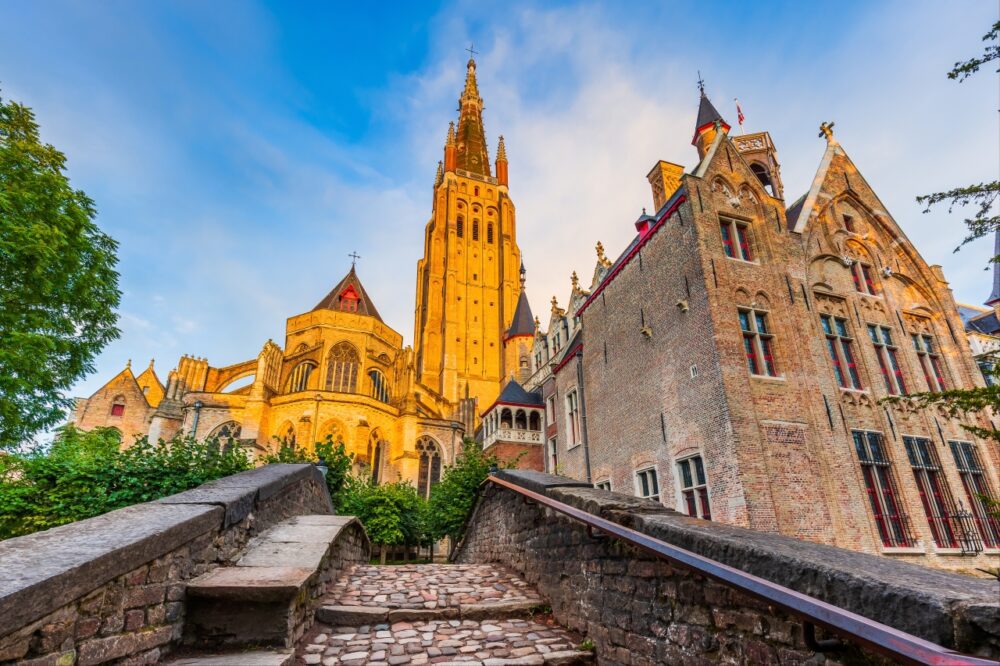
One of the best things about Bruges is how compact and easy it is to explore. Unlike larger cities, where you spend half your time navigating public transport, Bruges is designed for wandering. The entire historic centre is pedestrian-friendly, with narrow cobbled streets leading from one picturesque square to another. With no need for buses or trams, you can take your time, strolling at your own pace, stopping whenever something catches your eye—whether it’s a tiny hidden courtyard, a charming bookshop, or a café with the perfect spot for people-watching.
I loved the relaxed pace of life here. Even during peak tourist season, there were moments of stillness—early mornings when the streets were empty, evenings when the golden light reflected on the canals, turning the water to glass. One of my favourite walks was through Minnewater Park, a quiet green space on the edge of the city centre. It’s home to the Lake of Love, a beautiful, tree-lined waterway where swans glide peacefully. Local legend says that if you walk across the Minnewater Bridge with your partner, your love will last forever. I walked across solo, but I’d like to think that at the very least, my love for Bruges will never fade.
7. Magical in Every Season, Especially Winter
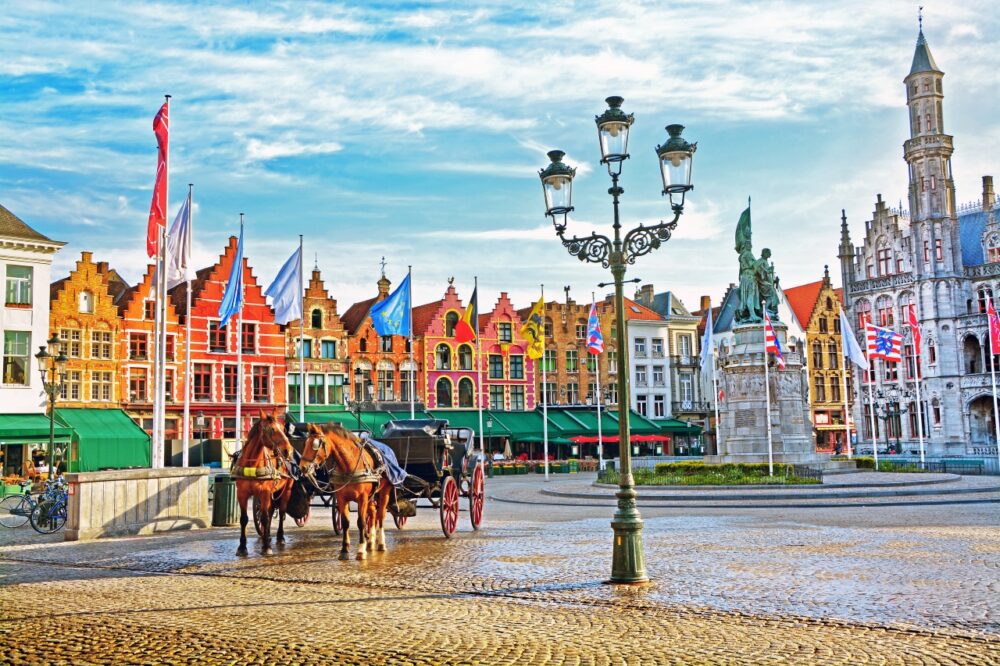
Bruges is stunning at any time of year, but there’s something particularly special about visiting in winter. As Christmas approaches, the city transforms into a festive wonderland, with fairy lights draped over centuries-old buildings, ice skating rinks set up in the squares, and cosy cafés serving hot chocolate so rich it’s practically a dessert in itself. The chilly air carries the scent of roasted chestnuts and spiced glühwein, making the whole place feel like a scene from a Christmas film.
I visited Bruges in December, and the Christmas market in Markt Square was the highlight of the trip. Wooden stalls were lined up in front of the Belfry, selling everything from handcrafted ornaments to Belgian chocolates and steaming bowls of Flemish stew. An ice rink had been set up in the centre of the square, with skaters gliding under the twinkling lights, their laughter echoing through the crisp winter air. The whole city felt warm and inviting, despite the cold. Even the canals took on a different kind of beauty, with mist rising from the water in the early mornings and the glow of lanterns reflecting on the surface at night. If you’re looking for a winter getaway that’s both romantic and festive, Bruges is hard to beat.
Cons – Things You Should Consider When Visiting Bruges
1. It Gets Extremely Crowded, Especially in Peak Season
Bruges is no longer a hidden gem—it’s one of the most visited cities in Belgium, and during peak season, it can feel like everyone has had the same idea to visit at the same time. The city’s popularity means that from late spring to early autumn, and especially on weekends, the historic centre is packed with tourists. Markt Square, the canals, and the Belfry become hot spots for tour groups, and trying to navigate through the narrow cobbled streets can sometimes feel more like a slow-moving queue than a leisurely stroll.
I visited Bruges in July, and by midday, the main streets were completely overwhelmed. I found myself dodging endless selfie sticks, waiting in long lines for canal boat tours, and struggling to find a quiet place to sit by the water. The charm of Bruges is best enjoyed at a slow pace, but with the crowds, it was hard to take it all in properly. The best way to avoid the worst of it is to explore early in the morning or late in the evening. I found that getting up before 8 am meant I could walk along the canals in peace, watching the city slowly wake up before the tour buses arrived. Alternatively, visiting in the off-season—late autumn or winter—makes for a much more enjoyable experience.
2. It Can Feel Too Touristy and Lacks Local Life
While Bruges is undeniably beautiful, some visitors find that it feels more like a museum than a real, living city. Unlike other Belgian cities such as Ghent or Antwerp, which have a strong local culture alongside their tourist appeal, Bruges often feels like it exists purely for visitors. Many of the shops, restaurants, and attractions cater specifically to tourists, and it can be difficult to find places that feel truly local.
This was something I noticed when trying to find an authentic café away from the main streets. Many places in the city centre seemed designed for day-trippers, with overpriced menus and souvenir shops selling the same generic chocolates and lace products. In the evenings, once the tourist crowds thinned out, the city felt strangely empty, as if it had been packed away for the night. There’s a local side to Bruges, but you have to actively seek it out. I found that venturing into quieter areas, like the Sint-Anna district, gave me a better sense of the city beyond its tourist façade. Here, I stumbled upon a tiny bar where locals were casually sipping their beers, and for a moment, it felt like I had found the real Bruges.
3. It’s Quite Expensive Compared to Other Belgian Cities
Bruges is undeniably more expensive than other cities in Belgium. Because it’s one of the country’s top tourist destinations, prices for accommodation, food, and attractions tend to be higher than in places like Ghent, Antwerp, or Leuven. While it’s not as pricey as Paris or London, you can expect to pay a premium for dining in the city centre, and even simple meals can come with a hefty price tag.
I noticed this especially when looking for accommodation. Many of the hotels and B&Bs in the old town charged significantly more than similar options in other Belgian cities. Even budget hotels weren’t exactly cheap, and finding affordable dining options in the city centre was a challenge. A standard meal at a mid-range restaurant cost noticeably more than what I had paid in Ghent just a few days earlier. Of course, there are ways to cut costs—staying in a guesthouse slightly outside the centre, grabbing food from bakeries instead of sit-down restaurants, and skipping the pricier tourist attractions—but for those travelling on a budget, Bruges requires some careful planning to avoid overspending.
4. Limited Nightlife and Evening Entertainment
If you’re looking for a lively nightlife scene, Bruges isn’t the place for it. Unlike Brussels or Antwerp, which have thriving bar and music scenes, Bruges tends to wind down quite early. Many restaurants and bars close by midnight, and outside of a few traditional pubs and beer cafés, there isn’t much happening in the evenings. It’s a city that feels best suited to slow dinners and relaxed walks rather than late-night excitement.
One evening, I found myself searching for a place to have a drink after 11 pm, only to realise that many of the bars were already closing or completely empty. The city’s quiet, historic charm is a big part of what makes it special, but if you’re someone who enjoys a more energetic atmosphere at night, you might find Bruges a bit underwhelming. There are a few places, like ‘t Poatersgat, a cosy underground beer bar, that stay open later, but overall, nightlife is not one of Bruges’ strong points. If you want a city with more evening options, Ghent is a better choice, as it has a strong student population and a much more vibrant nightlife scene.
When to Visit Bruges
The best times to visit Bruges are spring (April to June) and autumn (September to October) when the weather is mild, the canals are lined with blooming flowers or autumn colours, and crowds are manageable. Bruges is particularly magical in winter, especially in December when the city hosts festive Christmas markets and the historic centre sparkles with holiday lights. Summer (July and August) is peak tourist season, with warm weather and bustling squares, though you’ll find fewer crowds in the early morning or evening when the city has a quieter charm.
How to Get to Bruges
The closest major airport to Bruges is Brussels Airport (BRU), located around 100 kilometres away. Brussels Airlines, KLM, and Lufthansa offer frequent flights from across Europe and beyond. From the airport, direct trains to Bruges are frequent and take about 1.5 hours, with a quick change at Brussels’ main station. Brussels South Charleroi Airport (CRL) is also an option, especially for budget airlines, though it requires a longer transfer by bus and train (about 2.5 hours). For those coming from other Belgian cities, Bruges is well-connected by train from Antwerp, Ghent, and Brussels.
Where to Stay in Bruges
Bruges offers a variety of accommodation options across its quaint and historic neighbourhoods:
- Luxury: Historic Centre – Right in the heart of Bruges, near the Belfry and Market Square, you’ll find charming, upscale hotels like Hotel Dukes’ Palace and Relais Bourgondisch Cruyce, both offering a blend of medieval charm and modern luxury.
- Mid-range: Sint-Anna – A quieter, residential area with canalside charm, just a short walk from the centre. Options like Hotel de Orangerie and Hotel Ter Brughe offer comfort and classic style at a more affordable rate.
- Budget: ’t Zand – Near the main train station, this area offers budget-friendly options with easy access to the centre. Try St. Christopher’s Inn Hostel or Hotel ‘t Putje for affordable stays close to the action.
Getting Around Bruges
Bruges is compact and best explored on foot, especially in the Historic Centre, where most attractions are within a short stroll. For longer journeys, the city’s De Lijn buses are a reliable way to get around, and tickets can be purchased for single or day use, which can save if you plan to hop on and off. Bruges is also bike-friendly, with numerous rental shops and scenic routes around the canals and parks. For a unique perspective, try one of the canal boat tours, which offer a relaxing way to see the city’s medieval architecture from the water.
How Long to Spend in Bruges
Two days is ideal for seeing Bruges’ main highlights, including the Belfry of Bruges, Basilica of the Holy Blood, and Groeningemuseum. With an extra day, you can take your time exploring quieter corners, try local chocolate shops, or even venture to nearby Damme for a cycle along the canal. If you’re a history or art lover, an additional day would allow you to dive deeper into Bruges’ museums or simply enjoy its picturesque squares and peaceful canals at a leisurely pace.
Conclusion
So, is Bruges worth visiting? Absolutely! With its fairy-tale setting, rich history, and world-class beer and chocolate, Bruges offers an unforgettable experience. Its romantic canals and medieval charm make it one of the most enchanting cities in Europe. While it can get crowded with tourists, especially in the summer, the city’s beauty and atmosphere more than make up for it. If you’re ready to experience one of Belgium’s most magical destinations, start planning your trip to Bruges today—you won’t be disappointed!
